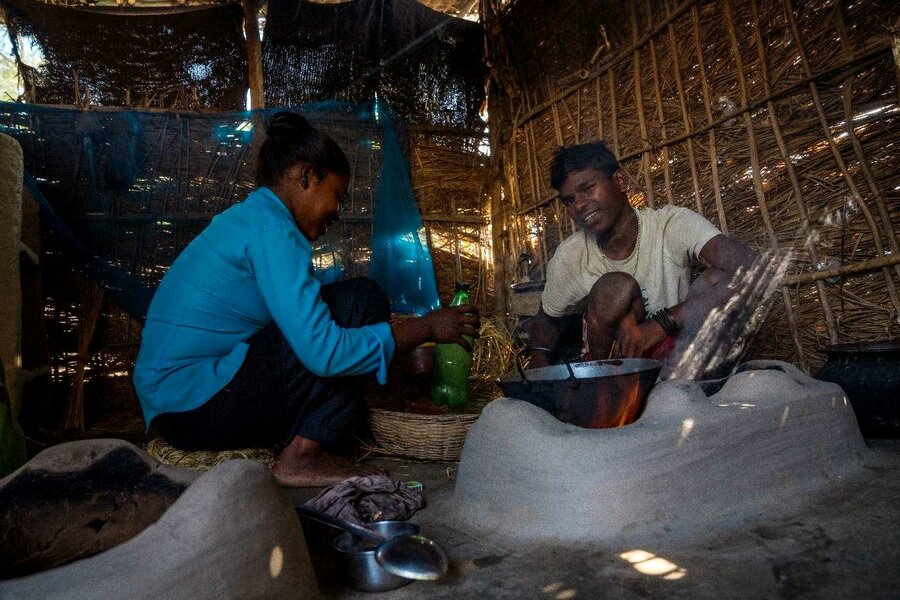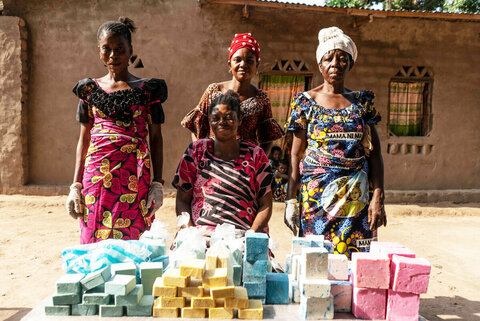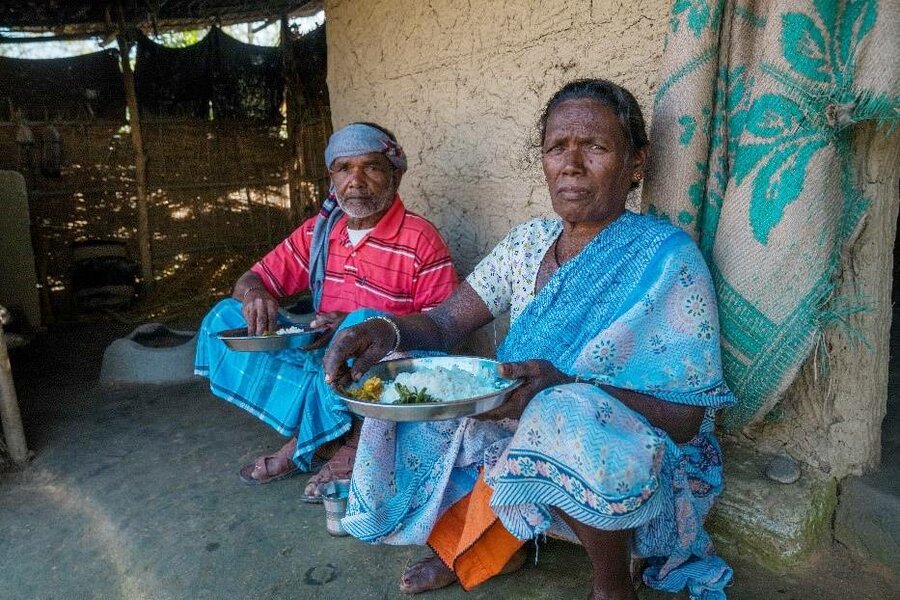Nepal: How WFP helps families recover from devastating floods

Sunbeams trickle through little holes on the straw wall of his small hut in Jhapa in eastern Nepal. A blue fishing net hangs from the low ceiling of the kitchen. A makeshift wood stove issues smoke.
For 17-year-old Narendra Kisku, ‘Naren’ for short, this is home. He blows to light up the fire to cook. Then he coughs, takes another breath and blows again. It is mid-winter but still warm outside.
“I start the day early,” says Naren as he pours the oil, preparing fish soup for his grandparents. His morning begins in the tea plant garden at dawn. Ten kilos of tea leaves fetch him US$1.
Naren is also a part-time fish vendor, going out fishing whenever he has time, with his grandfather.
Five years ago, life was relatively smooth sailing. Naren had everything – a loving family, a home and lots of friends.
Then his father went off to India to find work, leaving him in Milanbasti, to be looked after his grandparents. “I will save money to buy you a bicycle,” his father told him, Naren recalls. Five years on, the man has yet to return. No one has heard from him.
“It’s something you hope would never happen,” says Naren. “It was terrifying to lose your dad at the age of 12.”
Then came the floods.
On 16 August 2017 the Kankai river broke its banks. Families faced disaster. “We were left with only our clothes, and important documents like my birth certificate,” says Naren. “That’s all we brought with us when we found this piece of empty land next to a tea garden.”
Last October, the floods returned. This time around the World Food Programme and the local government had cash grants ready to dispense (thanks to support from the German Federal Foreign Office and Nepal Red Cross Society).
Those facing the highest risk were registered using WFP’s SCOPE platform, which uses data to gauge people’s exposure to flood risk as well as socio-economic vulnerabilities. It has provied particularly useful assistance to 1,652 vulnerable families in the Jhapa district, including the Kiskus.
As members of the vulnerable Santhal community , they depend on daily-wage income to get by – so cash assistance is a lifeline. Naren’s family used the US$110 they received from WFP “to buy food – rice, salt, chillies, turmeric powder, as well as a bicycle.”
Forecasts give families a head start in preparing, while digital transfers slash the time over-the-counter transactions take – 80 percent of allocated assistance was delivered within 72 hours of the floods arriving.
“The assistance from WFP was timely and helped my grandpa provide for us,” says Naren. “The flood submerged huge swathes of farmlands. My grandpa lost his job, and we did not have a single penny at home.”
2021: Stories you may have missed from the World Food Programme

A cash grant from WFP secured two weeks’ worth of food for the family.
For Naren, however, the most important thing the money bought is the bicycle that his grandfather got him for his birthday. “I always wanted this bicycle,” he says.

“Now, I can do a lot of things quickly including attending trainings, going to school, selling fish… I also have more time to study.”
School is now a five-minute bike ride away, so he is never late.
Naren spends some of his time helping the community repair dykes and dams that get breached by floods every year, and improving trails which enable families to return to their homes and livelihoods.
Since the devastating earthquake of 2015 in Nepal, working to the reduce risk of disasters and by identifying red flags has become a regular part of WFP’s work across the country.
Last year WFP, together with the Nepal Red Cross Society, set up a container with critical equipment in Kamatole village. “There are many useful things stored inside: life jackets, buckets, tarpaulins, mattresses and sirens,” says Naren. “We are much better prepared if there is another flood.”
He adds: “There’s a siren in the municipal office. You can even hear it out in the tea garden. We’ve done several emergency drills. Also, I have my bicycle and now I am better prepared to warn villagers in time. We are no longer as scared as we used to be.”
Learn more about WFP's work in Nepal



